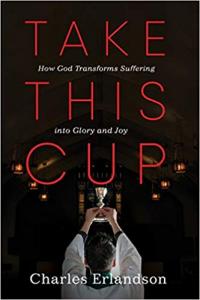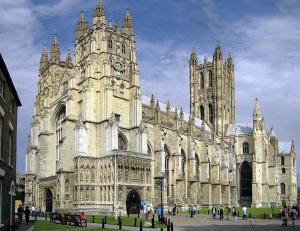 The Normative Definition of Anglicanism
The Normative Definition of Anglicanism
One of the things I discovered in spending several years trying to define Anglicanism for my Ph.D. was that most definitions of Anglicanism, and for any religious identity, are far too simplistic. In reality, religious identities are often bewilderingly complex. While many Anglicans have some sense of what they mean when they say they are Anglican, the truth is they may have very partial or subjective definitions that they carry around. How are we to include liberal Anglicans, traditionalist Anglicans, global Anglicans, very Low Church Evangelicals and Anglo-Catholics all under the name and identity of Anglicanism? To incorporate such diversity under the name of one religious identity necessitates a more complex and nuanced definition of Anglicanism than most people use and which is rarely explained.
As I investigated the kinds of definitions for Anglicanism that had been offered I discovered that several kinds of different definitions of Anglicanism typically have been offered. These include what I will be calling normative, structural, stylistic, and historical definitions.
Today, I’ll discuss Anglicanism in terms of its normative definition. Normative definitions of religious identities are based on certain norms or standards that are deemed to be essential or important aspects of a religious identity. Such normative definitions of Anglicanism are useful because they provide clear boundaries and therefore make the acts of definition and identification more possible.
Historically, Anglicanism has been held together in large part by the common doctrine, common order and discipline, and common worship (normative Anglicanism) proceeding from theEnglishChurchthat has formed a strong bond of union for the members of the Anglican Communion. These common norms are the theological and liturgical standards to which Anglicans have historically been bound and which have helped to shape and determine Anglican identity.
These norms of the Church of England historically have been retained to a large degree by new Anglican provinces as they sought to maintain continuity with the doctrine, discipline, and worship of the Church of England. Thus, being Anglican has historically meant not just a current being in communion with but also a being in continuity with this common life on which the present Anglican Communion largely has been based.
Among the various aspects of this common life are the elements of the Lambeth Quadrilateral: the belief in Scripture as the highest authority, belief in the historic Creeds, the two dominical Sacraments, and the episcopacy as locally adapted. While the Lambeth Quadrilateral expresses general Christian norms, Anglicanism has historically adhered to certain specifically Anglican norms as well. Some Anglican norms, such as the four elements of the Lambeth Quadrilateral, are norms that are common to many other Christian churches. To the terms of the Lambeth Quadrilateral, most Anglicans would traditionally have added the dogmatic decrees of the General Councils and the writings of the Church Fathers as the record of the mind of the Church in reading Holy Scripture.
Every religious tradition, including every Christian church, must have some way of knowing that it’s Christian but also must have some way of knowing how it maintains its own distinctive identity as well. While Anglicans have the above-mentioned norms in common with many churches, specifically Anglican norms exist as well. These include The Book of Common Prayer (which was given its most abiding classical form in the 1662 Prayer Book), the Ordinal, the Thirty-nine Articles, the canon law of each particular Anglican Province or national church; and the canon law of each particular diocese (under the authority of all of the above). Most important are the Thirty-nine Articles, the Book of Common Prayer, and the Ordinal, which are widely recognized as the three essential historical Anglican formularies.
Where the Prayer Book and Articles are faithfully maintained, a church is still identifiably Anglican. Where either the Prayer Book or Articles, and especially the Prayer Book, is abandoned, a church becomes less recognizably Anglican. As I will discuss in later blogs, both the Prayer Book and Articles have been abandoned by certain Anglicans. This is especially true for liberal Anglicans but is also true for an increasingly large number of orthodox Anglicans – a fact that must be grasped in order to truly understand Anglicanism today.
Normatively, liberal Anglicans do not believe that the Bible is the Word of God that serves as the highest authority for the Church; therefore, liberal Anglicans are becoming increasingly less and less like their orthodox Anglican counterparts. Where the Prayer Book is still used, even an imperfect Prayer Book such as the 1979 Prayer Book of The Episcopal Church, liberal Anglicans may still seem a lot like orthodox Anglicans, even while their theology is very different.
On the other hand, orthodox Anglicans who still hold the Bible up as their standard but have abandoned the Prayer Book for their own contemporary liturgies may look a lot less Anglican than Anglicans who still use the Prayer Book. These differences are not merely cosmetic: Anglicans who have stopped using the Prayer Book also have a different, although still orthodox in terms of the Creeds, theology than those who have maintained the Prayer Book. Over time, this theology and its attendant identity will grow further apart from traditional Anglicanism.
The normative identity of Anglicanism is therefore a generally orthodox (in terms of the Creeds) identity shared by many other orthodox identity; a historically Catholic and orthodox identity that is also based on the General Councils and the writings of the Church Fathers; and a specifically Anglican identity that has been based on both the Prayer Book and the Articles. At whatever level these normative identities are challenged, a church that has jettisoned these norms is in some sense less truly Anglican for it.
As we’ll see in the next blog, when we look at structural definitions of Anglicanism, there are other ways of defining what it means to be an Anglican.
CC Image courtesy of Librarian by markhillary on Flickr.jpg









